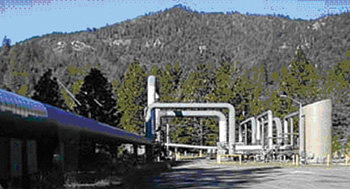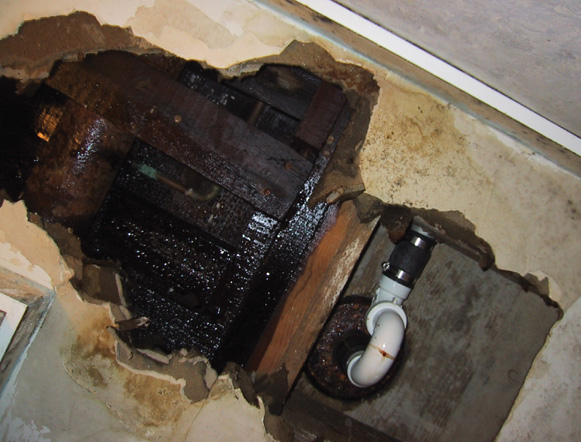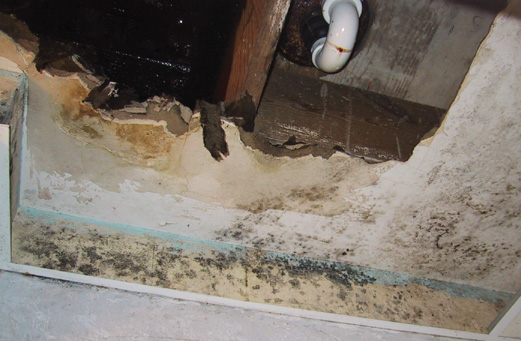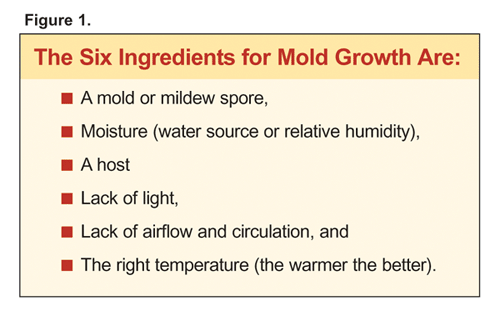Discussion about renewable energy sources and usage is increasing around the world, especially among industries in the United
States. While coal, oil and natural gas prices soar, and greenhouse gas emissions continue to affect the earth’s climate,
alternatives for power are more attractive than ever.
There are five main renewable energy sources currently proven to provide “clean,” usable energy: biomass, geothermal,
hydrogen, hydropower, ocean, solar and wind. Biomass and hydropower sources top the list, both with relatively high
percentages of current usage—close to 45 percent.
Despite their proven effectiveness and our increasing need for them, the Department of Energy (DOE) Energy Information
Administration (EIA) reports that renewable energy sources are a modest part of our energy portfolio, accounting for only 6
percent of the country’s total energy supply. Although there has been booming growth of solar and wind power usage—both
by about 30 percent—renewable energy consumption reportedly has not budged since 1989, and the EIA expects just a 2
percent increase in usage by 2025.
This flat growth is due not only to the current dependence on fossil fuel power but also to the fact that many renewable
energy resource processes need to be improved and made cheaper to maintain. As fossil fuels continue to have negative impacts
on our society, though, the U.S. government, through many environmental agencies, is putting the pressure on industries to
find “greener” plant processes. Renewable energy is one good consideration, but pros and cons must be evaluated.
For instance, the DOE is providing $44 million this year in State Energy Program (SEP) grants to support and encourage
energy-saving and efficiency goals in every state and U.S. territory, Puerto Rico and the U.S. Virgin Islands
(www.eere.energy.gov/states/).
The SEP saves an average of 41.35 million Btus per year, reducing energy bills by $256 million.
Renewable Energy Defined
The DOE’s Energy Efficiency and Renewable Energy (EERE) office reports that hydropower is currently the largest source of
renewable power, generating nearly 10 percent of the electricity used in the United States.
Hydropower comes from capturing energy created by flowing water—most notably through a dammed river or lake—and
turning it into electricity. The dammed method of hydropower is called impoundment. Diversion methods channel part of the
flow of a river through a canal or penstock and may not require the use of a dam. There are various sizes of hydropower
plants, depending on the amount of electricity needed.
Newer methods of hydropower, called pumped storage, allow water in a lower pool to be pumped to an upper pool during off-peak
hours for storage until peak hours, when the upper water is released through a hydroelectric turbine to create valuable
peaking electricity during times of high demand. However, because pumped storage still requires the use of coal or nuclear
electricity to operate the turbine, it falls in the category of improved economics rather than renewable energy source.
Biomass is any plant-derived organic matter available on a renewable basis, such as agricultural food and feed crops and
animal wastes. According to EERE, technologies use renewable biomass resources to produce an array of energy-related products
including electricity, liquid, solid and gaseous fuels, heat, chemicals and other materials. Biopower technologies are proven
electricity-generation options in the United States, and there are a variety of fuels created from biomass resources: liquid
fuels like ethanol and methanol, and gaseous fuels like hydrogen and methane. Products made from biobased chemicals include
renewable plastics and natural fibers.
Bioenergy ranks a very close second to hydropower in renewable U.S. primary energy production, accounting for 3 percent of
the primary energy production in the country. The EIA reports that bioenergy used to rank number one but has declined
gradually over the past several years.
Hydrogen is the simplest and most plentiful element in the universe; however, it does not occur naturally as a gas on the
Earth. Instead, it is combined with other elements, as in water, which is a combination of hydrogen and oxygen (H2O).
Hydrogen is also found in many organic compounds like the “hydrocarbons” that make up many of our fuels: gasoline, natural
gas, methanol and propane. Hydrogen is produced from these sources through the application of heat: from bacteria or algae
through photosynthesis, or by using electricity or sunlight to split water into hydrogen and oxygen.
EERE states that even though hydrogen is high in energy, an engine that burns pure hydrogen produces almost no pollution. The
space shuttle is a perfect example. NASA has used liquid hydrogen since the 1970s to propel the shuttle and other rockets
into orbit. In addition to the rocket engines, hydrogen fuel cells power the shuttle’s electrical systems, producing a clean
byproduct—pure water, which the crew drinks. A fuel cell is like a battery that is constantly replenished by adding
fuel to it. It never loses its charge.
Hydrogen potentially could be used to power vehicles or run turbines or fuel cells to produce electricity. This locally
produced electricity could be used for normal electrical power requirements in buildings, supporting computers, lights, HVAC
fans and pumps, and air conditioning compressors. Many believe that once we determine how to produce hydrogen economically,
it will hold the best promise for powering our industries and homes.
EERE explains that geothermal energy is the heat from the Earth, which is clean and sustainable. Resources of geothermal
energy range from shallow ground to hot water and hot rock found a few miles beneath the Earth’s surface, down even deeper to
the extremely high temperatures of molten rock, called magma.
Geothermal hot water near the Earth’s surface can be used directly for heating buildings and as a heat supply for a variety
of commercial and industrial uses. Geothermal direct use is particularly favored for greenhouses and aquaculture. Although in
this country most geothermal resources are concentrated in the West, geothermal heat pumps can be used nearly anywhere.
With ocean water covering more than 70 percent of the Earth’s surface, it is potentially one of the largest available sources
of renewable energy. EERE reports that the oceans contain two types of energy: thermal and mechanical. Each day, the oceans
absorb enough heat from the sun to equal the thermal energy contained in 250 billion barrels of oil. As the sun warms the
surface much more than the deep ocean water, the temperature difference stores thermal energy. The conversion of ocean water
to electricity also produces desalinated water.
Mechanical energy is created from the power of ocean waves and tides. The total power of waves breaking on the world’s
coastlines is estimated at 2 to 3 million megawatts. There are many ways to extract this energy and turn it into electricity,
including similar methods to damming a river.
EERE describe solar technologies as using the sun’s energy and light to provide heat, light, hot water, electricity and even
cooling for homes, businesses and industry. Photovoltaic (PV) solar cells directly convert sunlight into electricity. We
already use a simple version of this energy to power watches and calculators. More complex systems can light houses and
provide power to the electric grid.
Solar hot-water heaters use the sun to heat either water or a heat-transfer fluid in collectors. A typical system will reduce
the need for conventional water heating by about two-thirds. High-temperature solar water heaters can provide
energy-efficient hot water and hot-water heat for large commercial and industrial facilities.
Wind energy can be captured to generate electricity, charge batteries, pump water or grind grain. Electricity can be
generated from wind turbines with two or three propeller-like blades, mounted on a rotor, that turn a generator—much as
a propeller can fly an airplane. The turbines are usually placed on high towers to take advantage of stronger, less
turbulent, wind.
Wind turbines can be used as standalone applications or they can be connected to a utility power grid or even combined with a
PV (solar cell) system. Research advances have helped drop the cost of energy from the wind by 85 percent during the last 20
years, providing greater incentive for government funding of this fuel source.
Practical Uses of Renewable Energy for Industries
The DOE’s Industrial Technologies Program (ITP) has created a variety of programs to aid in industrial process improvements.
For instance, through its Industries of the Future program, ITP is partnering with the most energy-intensive industries to
effectively plan and implement a comprehensive research and development (R&D) agenda. These vital industries—aluminum,
chemicals, forest products, glass, metal casting, mining, petroleum refining and steel—are responsible for the majority
of industrial energy consumption and represent the greatest opportunities to increase efficiency.
As an example, according to EERE, the U.S. chemical industry is the world’s largest, accounting for more than 26 percent of
global chemical production (over $450 billion per year) and nearly 30 percent of all U.S. industrial energy consumption. ITP
Chemicals hopes to help that industry achieve a 30-percent reduction in energy, water use, and toxic and pollutant dispersion
per unit of output by 2020 through cost-shared, precompetitive R&D projects that meet industry needs and help achieve
national goals for energy and the environment.
So which of the renewable energy resources will most likely affect and benefit the operation of industries in the United
States? The EIA’s “Annual Energy Outlook 2005” notes that “Despite strong growth in renewable electricity generation as a
result of technology improvements and expected higher fossil fuel costs, grid-connected generators using renewable fuels…are projected to remain minor contributors to U.S. electricity supply.” The EIA adds that renewables other than
conventional hydropower are projected to provide approximately 3.2 percent of total U.S. electricity generation by the year
2025.
According to EIA senior economist, Office of Integrated Analysis and Forecasting, Thomas W. Petersik, the slow growth of
renewable energy is due to a number of negative factors that naturally come with renewables’ processes. He explains that
renewables produce amounts of energy per unit volume that are too small, are too distant from transmission lines and
electricity consumers, and are too expensive to convert to electricity to compete with fossil fuels for grid-connected
electricity supply.
Petersik adds, “Intermittent renewables, that is, solar and wind power, suffer from uncertainty in availability—cloudy
or windless periods—no solar power at night, for example, and the general certainty in most instances that winds will
be diminished during summer peak hours. Moreover, least-cost renewable energy sources tend to be in relatively short supply,
so that once initial quantities are used, costs for additional use could rise substantially. Finally, renewables can also
present environmental challenges, such as chemical contaminants for geothermal, or dangers to fish or birds for
hydroelectricity or wind, respectively.”
That said, however, Petersik counters that in a minority of instances, EIA projections and market observation indicate that
renewables can be competitive and contribute to U.S. electricity supply—including industries—through the grid or
other method. He explains that biomass fuels such as wood sources, or geothermal or hydroelectricity resources, are known to
be very reliable.
“Where renewables can compete successfully,” says Petersik, “they offer opportunities for least-cost electricity supply,
thereby lowering U.S. industry energy costs and helping them remain competitive, providing domestically supplied energy and
domestic employment, often times also adding environmental benefits—such as cleaner air. In those instances, by
offering lower cost competitive energy supplies, renewables also substitute for fossil fuels, thereby contributing to
competition and reduced price pressures on fossil fuels in all markets.”
Petersik predicts that off-grid solar power, despite its tendency to be notably more expensive than grid power, may become
cost effective in “remote” locations—sometimes even within cities—”where the cost of extending a distribution
line to supply a small amount of very valuable power exceeds the relatively lower cost of solar photovoltaic (PV)
battery-supported PV unit,” he explains. He reports that biomass, particularly forestry and wood wastes, has provided the
U.S. pulp and paper industries low-cost fuel for electricity generation for decades. These same energy crops could provide
future electricity supplies even though “biomass gasification technologies are costly and not yet commercial—and face
significant challenges from fuel contaminants—and transportation of biomass fuels from field to generating plant
remains expensive,” he adds.
If the United States were to turn more aggressively to renewable energy, Petersik believes that biomass and wind power appear
to be the most likely sources, with geothermal power as another likely contributor for some additional supply in California,
Nevada and a few other Western states. He says there is also evidence that conventional hydroelectric
power—historically a major contributor to U.S. industrial success—might be able to contribute a significant
proportion of new U.S. renewable electricity supply. This could be done primarily by adding generators to existing dams and
hydroelectric facilities and renovating and upgrading obsolete turbines, generators and associated equipment—all
without building new dams and, in some instances, without diverting additional water. But while hydropower has significant
reliability and availability in most parts of the country, it also faces cost, environmental and alternative-use challenges.
The EIA is not a policy agency and does not set goals or advocate for them; however, Petersik summarizes, “EIA estimates and
projections all indicate that renewables can and will contribute to meeting U.S. electricity supplies, but that, like most
everything else, if the nation chooses to rely much more heavily on renewables, we will need to be willing to pay for them
and be willing to accommodate their presence in our communities.”
Related Opportunities for the Mechanical Insulation Industry
According to Gordon Hart, a consulting engineer for ARTEK Inc. with more than 25 years in the thermal insulation industry,
some renewable energy processes show promise for the insulation industry. For starters, he explains that creating biomass
power requires the use of a chemical plant—converting soybeans to diesel fuel, or corn to ethanol. As already
demonstrated in today’s chemical plants, their high-temperature operations and inclusion of large numbers of pipes and
equipment would require thermal insulation.
Solar voltaic energy shows the most promise in housing insulation and therefore shows minimal potential for industries.
Geothermal power, on the other hand, is proven to require insulation. Hart explains that geothermal “is already harnessed at
The Geysers Plant in northern California and requires the use of lots of insulation. That electrical power plant collects
geothermal-generated steam from beneath the hills and uses it to power low-pressure turbines, which in turn power electrical
generators. The plant has an overall capacity to generate 850 MW of electrical power, about equal to the capacity of a large
coal-fired plant. There are a large number of steam ‘wells’ and each of these is connected with insulated piping to larger
collection piping. (Shown in Figure 1.) Without effective insulation on the collection pipes, such as in the photo, the
process wouldn’t work.”
However, Hart explains, The Geysers Plant only provides about 4 percent of the state’s electrical power needs. The only other
major geothermal opportunity in this country is probably in Yellowstone National Park, which would require obstructing the
crowd-drawing aesthetics of “Old Faithful,” America’s oldest national park attraction.
Hydroelectric power is the oldest form of electrical power generation and an important form of renewable energy, says Hart.
Of the large number of existing hydroelectric power stations in the United States, the largest is the Hoover Dam, located
downstream of the Grand Canyon on the Colorado River, and the source of Lake Meade.
“As a hydroelectric power station, this magnificent engineering structure can generate its rated 2,000 MW of electrical
power when the lake is full,” reports Hart. “Unfortunately, the U.S. Interior Department can’t keep Lake Meade full due to
drought, steady growth in southern California since it was completed in 1935, and more recent spectacular growth in and
around Las Vegas, Nevada. You can’t use all that water and generate 2,000 MW of electrical power at the same time.”
Even more importantly for the insulation industry, hydroelectric power plants do not require the use of insulation. In fact,
no hydropower energy sources require insulation, nor do hydrogen, solar and wind sources.
Although opportunities for our industry in renewable energy technologies are limited, all is not lost, says Hart. “Renewable
energy will only be economical if fossil fuel prices remain high or continue to increase past their current levels. If that
happens, then it will become increasingly cost effective for users of fossil fuel energy to use it as efficiently as
possible. When they do, mechanical insulation will become increasingly important. Mechanical insulation typically has a
simple payback of less than 2 years: on high-temperature piping and equipment, it is as short as 1 month. When dealing with
thermal energy, mechanical insulation is simply the most cost effective means of increasing energy efficiency.”
So, although the mechanical insulation industry probably will not derive much direct benefit from the growth of renewable
energy technologies, Hart believes the same economic factors fostering the growth of renewables also will foster the growth
of the mechanical insulation industry. And if the trend for increasing fossil fuel prices increases, he says, our industry’s
future still looks very bright.
















